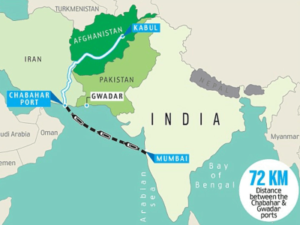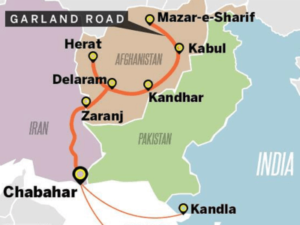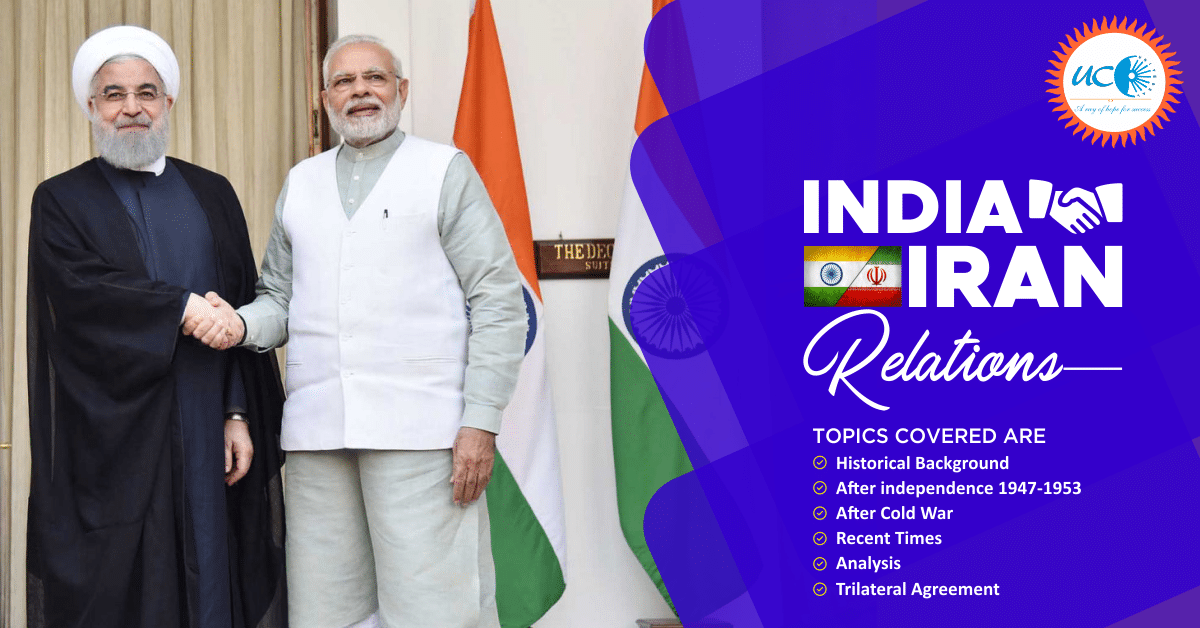India Iran Relations
Historical Background
- Since prehistoric times, there have been cultural similarities between Persia & India.
- Pre Independence, India and Iran were neighboring nations.
After Independence 1947-1953
- During much of the Cold War period, relations between the Republic of India and the former Imperial State of Iran suffered due to different political interests primarily due to non-aligned tactic of India towards the US that nurtured a strong military links with the Soviet Union while Iran enjoyed close ties with the United States.
- Shah’s Iran had the heavy influence of the West and it became a member of various Western-sponsored regional organizations like the Baghdad Pact, while India was more towards the Soviet Union and the NAM.
- Throughout the 80s, Iran and Iraq were in a state of war and Iraq was then a close friend of India.After the Cold War
- Indian PM Narasimha Rao visited Iran in 1993 and since then, relations have been improving.
- Iran and India closely cooperated in supporting the Northern Alliance in Afghanistan against the Taliban in the 1990s.
- Iran has emerged as India’s most viable transit option for trade with Central Asia and Russia.
- India, Russia and Iran signed an agreement in 2000 for sending Indian Cargo to Russia via Iran through a ‘North-South Corridor’.
- But in 2006, India supported the transferring of Iran’s dossier on its nuclear programme from the IAEA to the UN Security Council. This was a huge setback to India-Iran relations.
- Relations were back on track in 2008 when Iranian President Mahmoud Ahmadinejad came to India, and India promised an independent policy towards Iran and not yield to US pressure.
Recent Times
- India has worked hard to maintain its ties with Iran when there were international sanctions on Iran from all sides.
- The main positive from Modi’s visit was that both India and Iran decided to move out of the twisting of signing memorandums of understanding with each other over the Chabahar project.
- During his visit, India, Afghanistan and Iran signed a trilateral trade treaty for developing the port project and beyond.
- India has USD 20 billion as an investment in oil & gas, petrochemical and fertilizer projects in Iran.
- In May 2016, PM Modi visited Iran, where the historic Chabahar port agreement was signed
- India invests in setting up industries from aluminum to urea plants in Chabahar.
Analysis
Why India-Iran relations are mutually beneficial?
1. Energy:
- India can decrease the dependence on Saudi for oil and Iran oil is comparatively cheap.
- Iran has the world’s second-largest reserves of natural gas, yet it is not a major exporter.
- Iran has several challenges to overcome before it can become an energy supplier to Europe and Asia. Iran’s energy infrastructure – long neglected as a result of Western sanctions – requires major upgrades to make it capable of sustained energy exports.
- This will require massive foreign investment and India can tremendously help here.
2. Chabahar port:
It is located on the Makran coast, Chabahar in southeastern Iran. Its location lies in the Gulf of Oman. This coast is a relatively underdeveloped free trade and industrial zone, especially when compared to the sprawling port of Bandar Abbas further west. Also, it is the only Iranian port with direct access to the ocean.

Chabahar port in southeastern Iran
Why this port is of interest to India?
- India believes the port is critical to its interests and wants to develop it as a counter to Pakistan’s Gwadar port which was built with Chinese assistance.
- The port will allow India to bypass Pakistan to transport goods to Afghanistan and Central Asia using a sea-land route.
- Chabahar Port lies in the Persian Gulf in Iran and will help India in expanding its maritime commerce in the region.
- It also provides opportunities to Indian companies to penetrate and enhance their footprint in the region.
- It is located 76 nautical miles (less than 150km) west of the Pakistani port of Gwadar, being developed by China. This makes it ideal for keeping track of Chinese or Pakistani military activity based out of Gwadar.
- The port will cut transport costs/time for Indian goods by a third.
- From Chabahar, the existing Iranian road network can link up to Zaranj in Afghanistan, about 883kms from the port. The Zaranj-Delaram road constructed by India in 2009 can give access to Afghanistan’s Garland Highway, setting up road access to four major cities in Afghanistan — Herat, Kandahar, Kabul and Mazar-e-Sharif.

Garland Road From Mazar-E-Sharif to Kandala
3. INSTC:
It will boost India’s access to Iran, the key gateway to the International North-South Transport Corridor (INSTC) that has sea, rail and road routes between India, Russia, Iran, Europe and Central Asia. It can significantly boost the import of iron ore, sugar and rice to India from Afghanistan. It can also help to reduce the import cost of oil to India.
Trilateral Agreement:
- India, Iran and Afghanistan sign a three-way land transit agreement on Iran’s strategic southern port of Chabahar.
- Under the agreement, India will invest up to 500 million dollars in a deal to develop a strategic port in Iran.
- It can spur the unhindered flow of commerce throughout the region and its economic fruits will expand trade, attract investment, build infrastructure, develop industry and create jobs.
- India will get sea-land access route to Afghanistan bypassing Pakistan which will open opportunities for Indian companies to explore Afghanistan’s mineral wealth.





